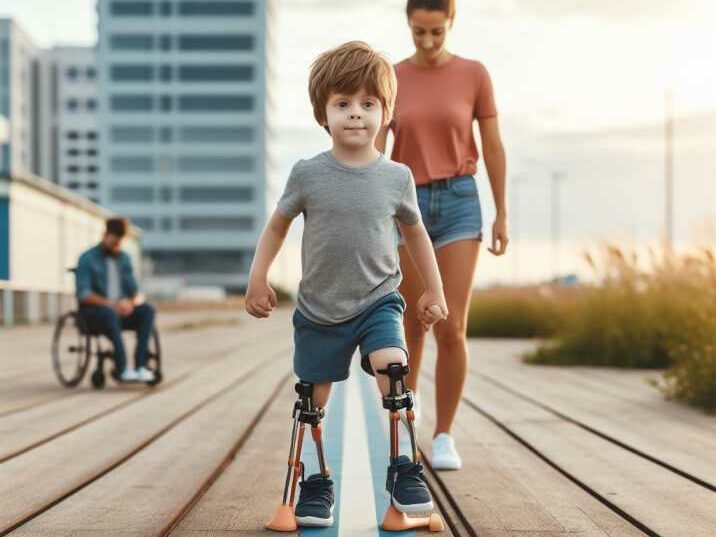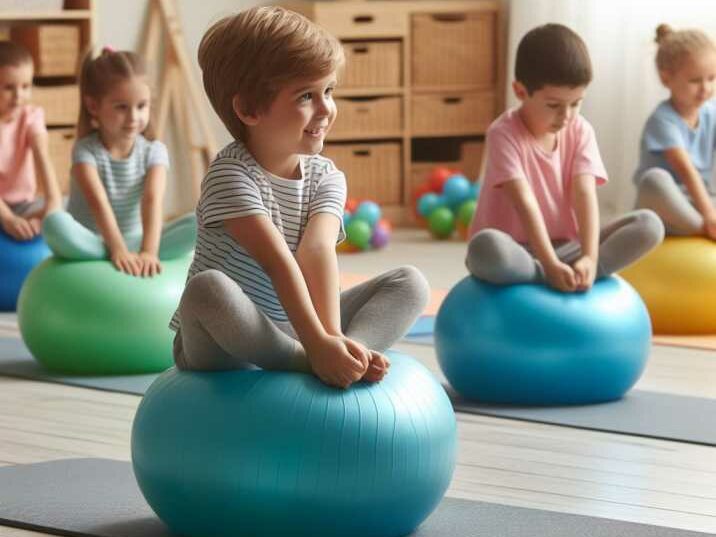Introduction:
Table of Contents
Balancing Exercises for Kids with Disabilities
Children with physical disabilities often face unique challenges in maintaining balance and coordination. However, with the right adaptations and exercises, they can improve their stability and motor skills significantly. In this article, we’ll explore seven effective balancing exercises specifically designed for children with physical disabilities. These exercises not only enhance physical abilities but also promote confidence and independence.
Understanding the Importance of Balancing Exercises for Children with Physical Disabilities:
Balancing exercises play a crucial role in the development of children with physical disabilities. These exercises help improve coordination, proprioception, and overall stability, which are essential for performing everyday tasks independently. Additionally, mastering balance can enhance confidence and self-esteem in children, encouraging them to explore and engage with their surroundings more actively.

Factors to Consider When Adapting Balancing Exercises:
When adapting balancing exercises for children with physical disabilities, several factors must be taken into account:
- Individual Abilities: Each child has unique strengths and limitations, so exercises should be tailored to their specific needs and abilities.
- Safety Measures: Safety should always be a priority when designing exercises, with proper equipment and supervision in place to prevent accidents.
- Accessibility: Ensure that exercises are accessible to children with different types of physical disabilities, considering factors such as mobility aids and environmental barriers.
- Engagement: Make exercises engaging and enjoyable for children to encourage participation and sustained interest.
- Progression: Gradually increase the difficulty of exercises as children improve their skills, providing challenges that are both achievable and motivating.
7 Effective Balancing Exercises for Children with Physical Disabilities:
- Seated Balance Ball Rolls:
- Sit on a stability ball with feet flat on the ground.
- Roll the ball gently side to side while maintaining balance.
- Encourage reaching and stretching movements to improve stability.
- Modified Yoga Poses:
- Adapt traditional yoga poses to accommodate children with physical disabilities.
- Focus on poses that promote balance, such as tree pose or warrior pose, with the support of a chair or wall if needed.
- Balance Beam Walk:
- Create a makeshift balance beam using a low, stable surface such as a wooden board or taped line on the floor.
- Guide children as they walk along the beam, adjusting support as necessary to maintain balance.
- Stability Ball Bounce:
- Sit on a stability ball with feet flat on the ground and hands placed on the ball for support.
- Gently bounce up and down, focusing on maintaining stability and control.
- Balloon Volleyball:
- Inflate a balloon and play volleyball with children, using hands, feet, or adaptive equipment to hit the balloon.
- This activity improves hand-eye coordination and balance while providing a fun and interactive experience.
- Tandem Walking:
- Have children walk in a straight line heel-to-toe, either independently or with support from a caregiver.
- Gradually increase the distance and complexity of the walking path to challenge balance and coordination.
- Dance Therapy:
- Engage children in dance therapy sessions tailored to their abilities and preferences.
- Incorporate rhythmic movements and music to promote balance, coordination, and emotional expression.
Tips for Ensuring Safety and Accessibility:
- Always supervise children during balancing exercises and provide assistance as needed.
- Use adaptive equipment such as stability balls, balance beams, and supportive chairs to accommodate different needs.
- Modify exercises based on individual abilities, making adjustments to support and difficulty level as necessary.
- Ensure the exercise environment is free from hazards and obstacles that could pose a risk to children’s safety.
Benefits of Balancing Exercises Beyond Physical Health:
In addition to improving physical health, balancing exercises offer a range of other benefits for children with physical disabilities:
- Enhanced Confidence: Mastering new skills and achieving balance boosts children’s confidence and self-esteem.
- Improved Concentration: Balancing exercises require focus and concentration, which can enhance cognitive abilities and attention span.
- Social Interaction: Participating in group exercises promotes social interaction and teamwork skills, fostering a sense of belonging and inclusion.
- Emotional Well-being: Engaging in physical activity releases endorphins, reducing stress and promoting overall emotional well-being.
Real-Life Success Stories: How Balancing Exercises Have Helped Children Thrive:
Include anecdotes or testimonials from parents, therapists, or educators describing the positive impact of balancing exercises on children with physical disabilities. Highlight specific achievements or milestones reached through consistent practice and dedication.
Conclusion: Empowering Children Through Adaptive Balancing Exercises
In conclusion, balancing exercises play a vital role in supporting the development and well-being of children with physical disabilities. By adapting exercises to meet individual needs and providing a safe and engaging environment, children can improve their balance, coordination, and confidence. Through regular practice and support from caregivers and therapists, children can overcome challenges and thrive both physically and emotionally.

FAQs:
- Can children with all types of physical disabilities benefit from balancing exercises?
- Yes, balancing exercises can be adapted to suit children with a wide range of physical disabilities, including cerebral palsy, spina bifida, and muscular dystrophy.
- How often should children engage in balancing exercises?
- The frequency of balancing exercises can vary depending on individual needs and abilities. It’s essential to consult with a healthcare professional or therapist to determine the appropriate exercise regimen for each child.
- Are there any specific safety precautions to keep in mind when practicing balancing exercises?
- Yes, always ensure that exercises are performed in a safe environment with proper supervision and equipment. Make modifications as needed to accommodate each child’s abilities and limitations.
- What are some signs that a balancing exercise may be too challenging for a child?
- Signs of difficulty may include excessive wobbling or loss of balance, frustration or discomfort, and reluctance to participate. It’s essential to provide support and adjust exercises accordingly to prevent injury.
- Can balancing exercises be incorporated into daily routines?
- Yes, balancing exercises can be integrated into daily activities such as playtime, therapy sessions, or structured exercise programs. Consistency is key to seeing progress and improvement over time.


